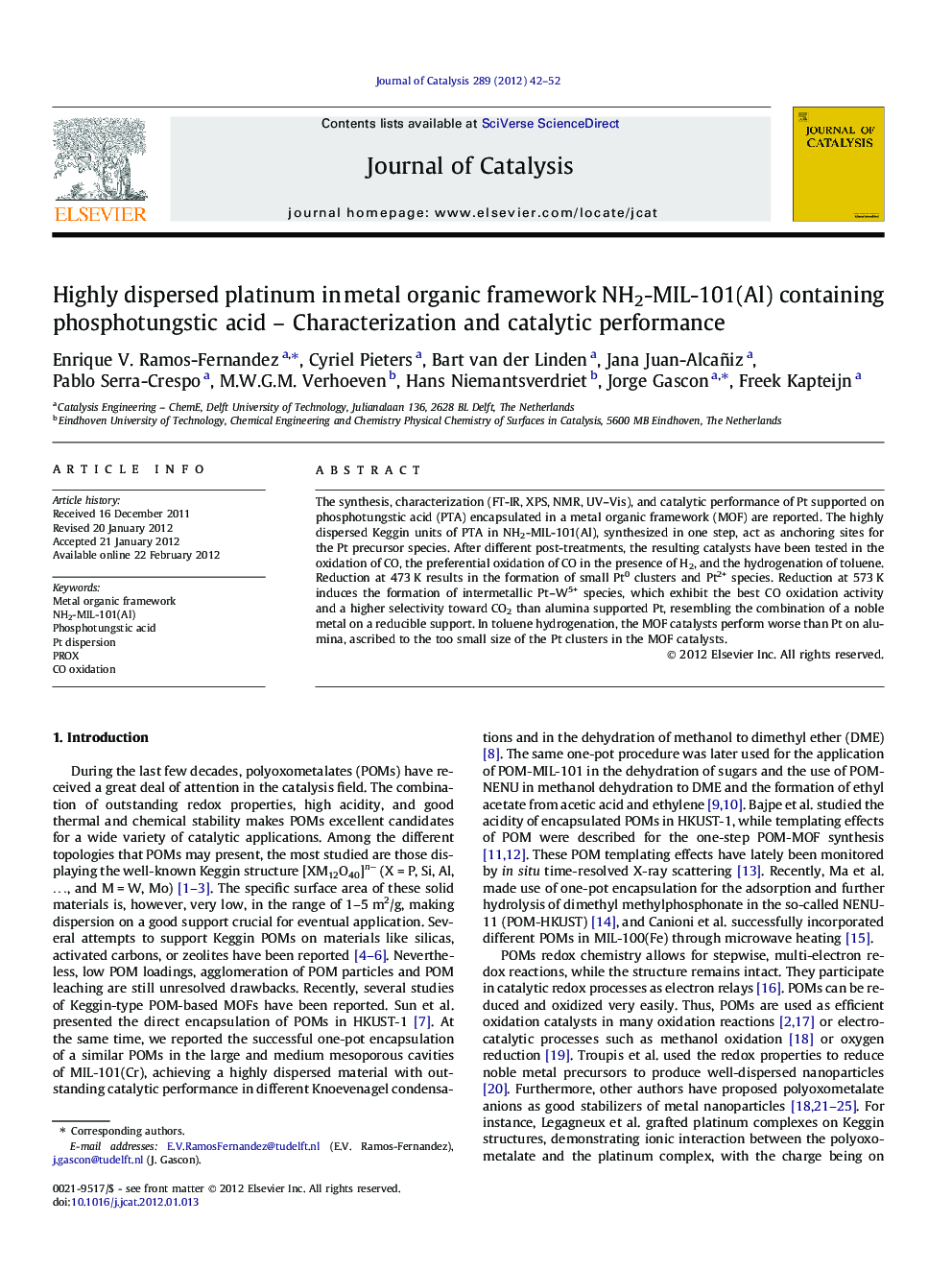| Article ID | Journal | Published Year | Pages | File Type |
|---|---|---|---|---|
| 61439 | Journal of Catalysis | 2012 | 11 Pages |
The synthesis, characterization (FT-IR, XPS, NMR, UV–Vis), and catalytic performance of Pt supported on phosphotungstic acid (PTA) encapsulated in a metal organic framework (MOF) are reported. The highly dispersed Keggin units of PTA in NH2-MIL-101(Al), synthesized in one step, act as anchoring sites for the Pt precursor species. After different post-treatments, the resulting catalysts have been tested in the oxidation of CO, the preferential oxidation of CO in the presence of H2, and the hydrogenation of toluene. Reduction at 473 K results in the formation of small Pt0 clusters and Pt2+ species. Reduction at 573 K induces the formation of intermetallic Pt–W5+ species, which exhibit the best CO oxidation activity and a higher selectivity toward CO2 than alumina supported Pt, resembling the combination of a noble metal on a reducible support. In toluene hydrogenation, the MOF catalysts perform worse than Pt on alumina, ascribed to the too small size of the Pt clusters in the MOF catalysts.
Graphical abstract■■■Figure optionsDownload full-size imageDownload high-quality image (152 K)Download as PowerPoint slideHighlights► Highly dispersed HPA in MOF has been used as an anchoring site for Pt. ► Monoatomically dispersed Pt was found. ► Hydrogen treatment at 573 K enables the formation of intermetallic species. ► Catalysts were tested in oxidation and hydrogenation reactions. ► Catalysts work better in oxidation reactions.
